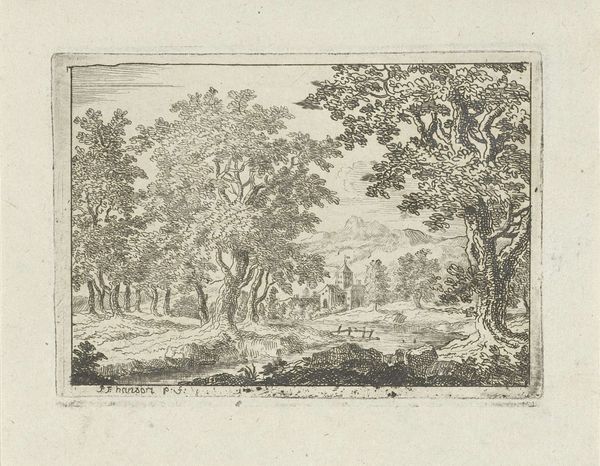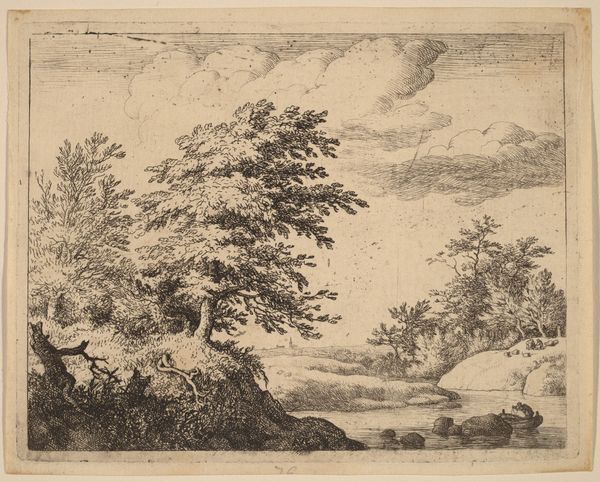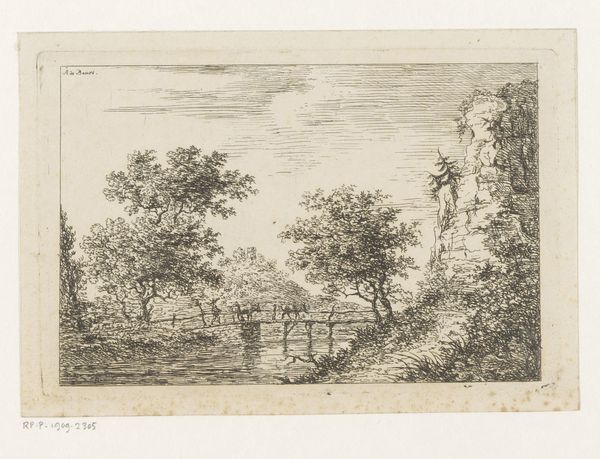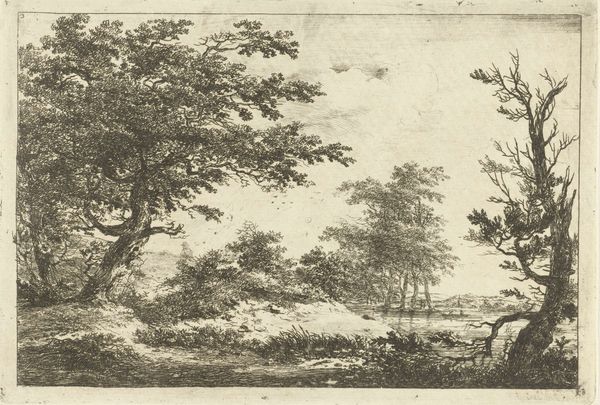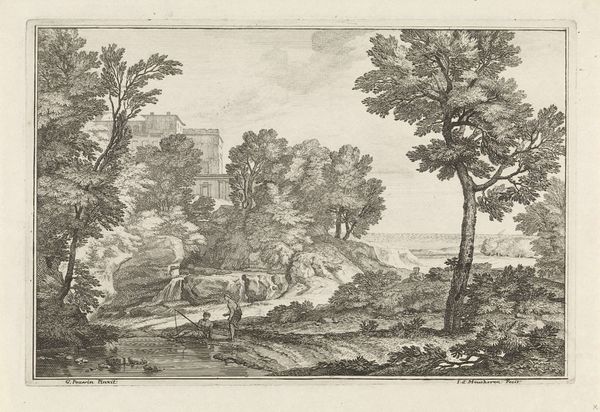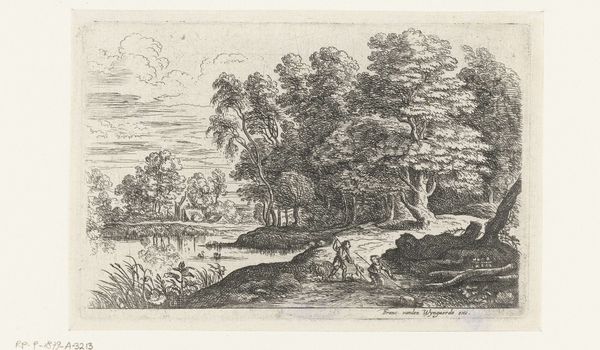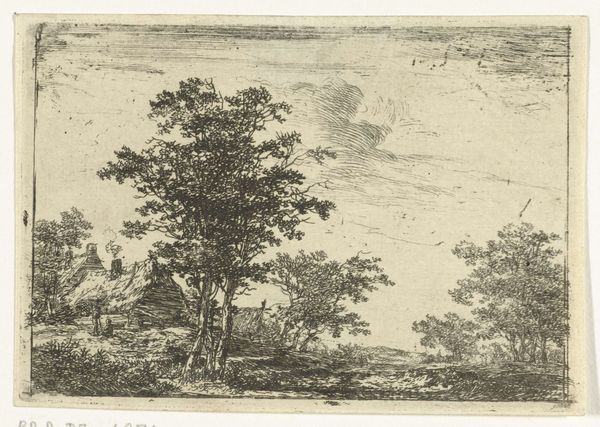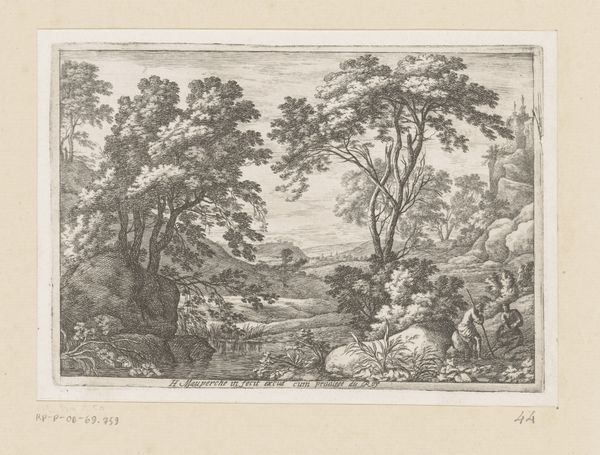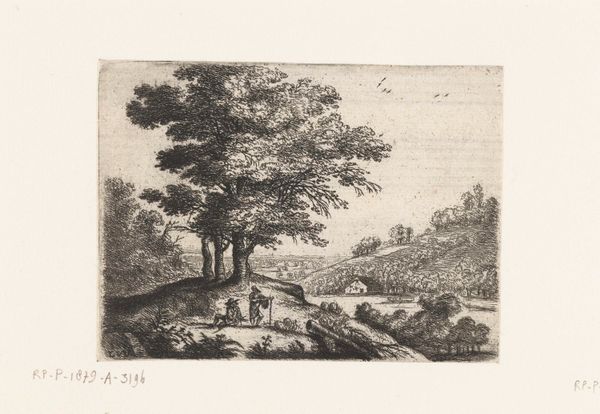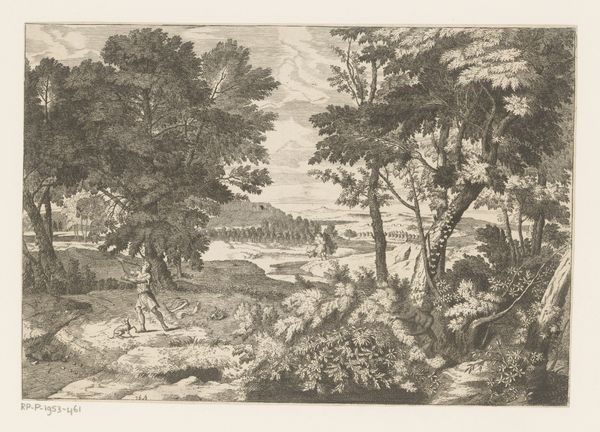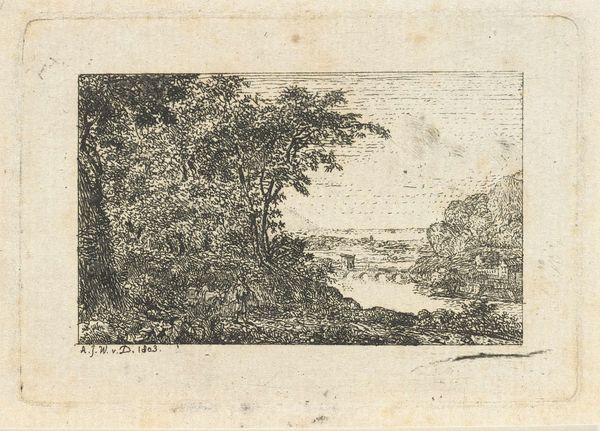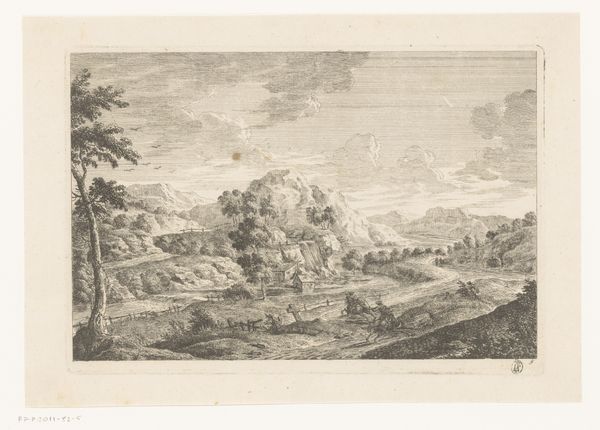
etching, engraving
#
baroque
#
etching
#
pencil sketch
#
old engraving style
#
landscape
#
engraving
#
realism
Dimensions: height 40 mm, width 49 mm
Copyright: Rijks Museum: Open Domain
Editor: Johanna de Bruyn's "Landschap met herder," which translates to "Landscape with Shepherd," dates sometime between 1732 and 1782. It's an etching – and there’s almost a dreamlike quality to the scene despite its very realistic style. I’m curious about the cultural implications of such a seemingly simple depiction. What can we read into this, beyond just a landscape? Curator: That's a great starting point. De Bruyn lived during a period of significant social stratification and emerging national identities. Landscape art at this time, especially depictions of rural life, often functioned as a form of idealization. Think about it: Who were the primary consumers of such imagery? Editor: Probably wealthier city dwellers, right? Craving an escape from urban life. Curator: Precisely! This etching likely served as a visual commodity, consumed by a burgeoning middle class that romanticized the simplicity and perceived moral purity of pastoral life. It’s interesting how art normalizes class structure and how it feeds a market, like a kind of branding. Notice how even the medium - etching, as a multiple, facilitates wider circulation and access, therefore wider cultural impact. Editor: So, it's not just about depicting a pretty scene, but reinforcing certain social values and power dynamics. Were there particular expectations placed on female artists like de Bruyn at the time? Curator: Absolutely. While women artists were gaining recognition, they often navigated a complex terrain of societal expectations. Didactic imagery was common, as was family portraiture. De Bruyn choosing landscape—often viewed as ‘neutral’—is maybe not so neutral after all. The very act of representing "nature" becomes intertwined with the social and cultural values attached to it. Does this perspective shift your initial perception of the etching at all? Editor: It does, actually. Seeing it less as a straightforward representation and more as a commentary on, or perhaps an escape from, the societal pressures of the time is fascinating. Thanks for unpacking the layers of meaning in something that initially seemed so straightforward. Curator: The power of art lies in its ability to reflect and shape our understanding of the world. Hopefully this artwork reveals how art engages the politics of imagery.
Comments
No comments
Be the first to comment and join the conversation on the ultimate creative platform.
